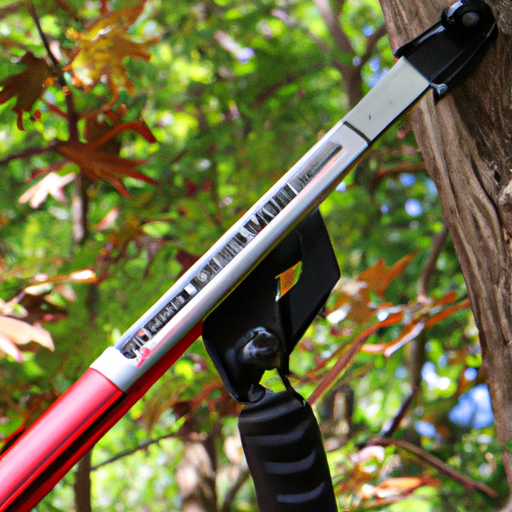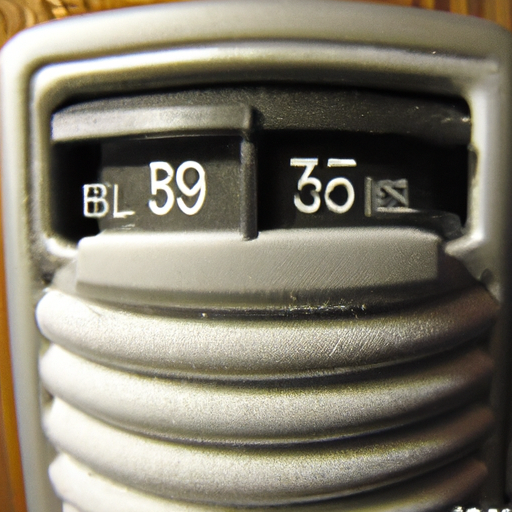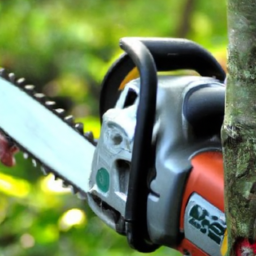Have you ever wondered if a pole saw and a pruning saw are the same thing? Well, fret not, for we are here to clear up any confusion! Many people often question the difference between these two handy tools, and it’s a topic worth exploring. While both pole saws and pruning saws serve the purpose of cutting branches and limbs, there are some key distinctions that set them apart. So, let’s dive right in and shed some light on the similarities and differences between these two cutting companions!
Definition of a Pole Saw
A pole saw is a specialized tool that is used for cutting or trimming tree branches that are out of reach. It consists of a long pole with a saw blade attached to the end, allowing you to safely and efficiently prune trees without the need for a ladder or climbing equipment. The pole saw is designed to provide an extended reach, making it easier to trim branches from the ground or from a stable standing position. It is commonly used by homeowners, gardeners, and professional landscapers to maintain the health and aesthetics of trees.
Components and features of a pole saw
A typical pole saw consists of several key components. Firstly, there is the pole itself, which can vary in length depending on the model, ranging from around six to fifteen feet. The pole is often made of lightweight materials such as aluminum or fiberglass to ensure ease of handling and maneuverability. At the end of the pole, there is a cutting head that houses the saw blade. The cutting head can typically be angled or adjusted to allow for different cutting angles and positions. Lastly, there is the saw blade, which is specifically designed for cutting through tree branches. The blade can vary in length and tooth pattern, depending on the type of cutting required.
Different types of pole saws available
There are several types of pole saws available on the market. One common type is the manual pole saw, which requires manual effort to cut through branches. It features a curved saw blade that is attached to the pole, and the user must pull and push the pole to make the saw blade move through the branch. Another type is the electric pole saw, which is powered by electricity and features a motor that drives the saw blade. Electric pole saws are usually lighter and easier to use compared to manual ones. Finally, there are gas-powered pole saws, which are more powerful and suitable for heavy-duty cutting tasks. Gas-powered pole saws are often used by professional landscapers or in large-scale tree maintenance projects.
Definition of a Pruning Saw
A pruning saw, on the other hand, is a hand-held tool specifically designed for pruning and cutting branches. It is smaller and more compact compared to a pole saw, and it requires manual effort to make cuts. Pruning saws are commonly used for smaller pruning tasks or in situations where the branches are within reach. They are versatile tools that can be used for a variety of pruning purposes, such as shaping trees, removing dead or damaged branches, or trimming shrubs and bushes.
Components and features of a pruning saw
A pruning saw typically consists of a straight or curved saw blade that is attached to a handle. The handle is designed to provide a comfortable and secure grip, allowing for precise control during cutting. The blade of a pruning saw is usually shorter than that of a pole saw and may feature different tooth patterns depending on the intended use. Some pruning saws also have additional features such as a locking mechanism to keep the blade securely in place when not in use.
Different types of pruning saws available
Similar to pole saws, there are different types of pruning saws available on the market. One common type is the folding pruning saw, which features a blade that can be folded into the handle for safe and compact storage. Folding pruning saws are popular among gardeners and homeowners due to their convenience and portability. Another type is the fixed blade pruning saw, which has a rigid blade that is permanently attached to the handle. Fixed blade pruning saws are often used for more heavy-duty cutting tasks or by professionals in the arboriculture industry. Additionally, there are also curved blade pruning saws, which are specifically designed for cutting through thick branches or for making curved cuts.
Purpose and Function
Comparison of the purpose and main function of a pole saw
The purpose of a pole saw is to provide an extended reach for cutting and trimming tree branches that are otherwise difficult to access. Its main function is to allow the user to safely and efficiently prune trees and maintain their health and appearance. Whether it’s removing dead or overhanging branches, shaping a tree, or clearing away vegetation, a pole saw is a versatile tool that can tackle a range of cutting tasks. With the ability to reach heights of up to 15 feet or more, a pole saw eliminates the need for ladders or climbing, making it a practical and user-friendly choice for tree maintenance.
Comparison of the purpose and main function of a pruning saw
In contrast, the purpose of a pruning saw is to provide a compact and handheld tool for more localized pruning tasks. Its main function is to allow the user to make precise cuts on smaller branches or in situations where the branches are within reach. Pruning saws are often used for shaping trees, removing dead or damaged branches, or maintaining shrubs and bushes. While they lack the extended reach of a pole saw, pruning saws offer greater maneuverability and control, making them ideal for detailed pruning work.
Design and Structure
Comparison of the design and structure of a pole saw
Pole saws are designed with a long pole to provide an extended reach and allow for safe pruning from the ground or a stable standing position. The poles are typically made of lightweight materials such as aluminum or fiberglass, making them easy to handle and maneuver. The cutting head is attached to the end of the pole and can be adjusted or angled to accommodate different cutting angles and positions. The saw blade itself is usually long and features specific teeth patterns to ensure efficient cutting through tree branches. Some pole saws also feature telescoping poles that allow for even greater reach and versatility.
Comparison of the design and structure of a pruning saw
Pruning saws, on the other hand, have a more compact and handheld design. They consist of a handle and a blade that are usually permanently attached or foldable for easy storage. The handle is ergonomically designed to provide a comfortable grip and allow for precise control during cutting. The blade of a pruning saw is shorter compared to a pole saw and may have varying tooth patterns depending on the intended use. The compact and lightweight design of a pruning saw allows for greater maneuverability and access to tight spaces.
Blade Types
Explanation of different blade types used in pole saws
Pole saws typically use two main types of blades: bypass blades and pruning blades. Bypass blades have a curved cutting edge that slides past a hooked counterblade, allowing for clean and precise cuts. These blades are commonly used for cutting through live branches. Pruning blades, on the other hand, have a straight cutting edge and are typically used for removing dead or heavily damaged branches. They feature wider and more aggressive teeth that can handle tougher cutting tasks.
Explanation of different blade types used in pruning saws
Pruning saws also come in different blade types to suit various pruning needs. Fine-tooth blades are ideal for making clean and precise cuts on smaller branches, while coarse-tooth blades are more suitable for cutting through thicker branches. Curved blades are designed for cutting in tight spaces or making curved cuts, while straight blades offer greater control and versatility.
Comparison of blade types between pole saws and pruning saws
Overall, pole saws tend to have longer blades with specific tooth patterns geared towards tree branch cutting. Pruning saws, on the other hand, have shorter blades with varying tooth patterns to accommodate different pruning tasks. While there may be some overlap in blade types between the two, the primary difference lies in the length and overall design of the blades.
Reach and Height
Comparison of reach and height capabilities of pole saws
The reach and height capabilities of pole saws are their key distinguishing features. With their long poles, pole saws can provide an extended reach of up to 15 feet or more, allowing for cutting branches at significant heights without the need for ladders or climbing equipment. This extended reach makes pole saws an excellent choice for maintaining tall trees or reaching over obstacles such as fences or roofs. Telescoping pole saws offer even greater reach, allowing access to branches that are higher up or at awkward angles.
Comparison of reach and height capabilities of pruning saws
Pruning saws, on the other hand, have limited reach and are designed for cutting branches that are within arm’s reach. While there may be instances where one can reach slightly higher branches with a pruning saw, their primary function is to tackle pruning tasks at a more localized level. Pruning saws are best suited for lower branches or when working on smaller plants or shrubs.
Usage and Application
Comparison of common usage scenarios for pole saws
Pole saws are commonly used in various scenarios where cutting or trimming high branches is required. Homeowners often utilize pole saws for routine tree maintenance in their yards, such as removing dead branches, thinning dense foliage, or trimming back overgrown branches. Gardeners and professional landscapers also rely on pole saws when pruning trees in parks, gardens, or larger landscapes. Additionally, pole saws can be instrumental in clearing away vegetation near power lines or buildings, effectively preventing potential hazards.
Comparison of common usage scenarios for pruning saws
Pruning saws find their applications in a wide range of gardening and landscaping tasks. They are commonly used for shaping trees, cutting back shrubs, removing deadwood, and maintaining the overall health and appearance of plants. Pruning saws are particularly useful in situations where accuracy and precision are crucial, such as pruning fruit trees or carefully sculpting hedges. Their compact size and handheld nature make pruning saws highly versatile for various pruning tasks.
Overlap or differences in their applications
While there may be some overlap in the applications of pole saws and pruning saws, their primary functions and reach capabilities result in key differences. Pole saws excel in reaching high branches and tackling tree maintenance tasks at heights, making them essential for large trees or situations where safety and convenience are priorities. On the other hand, pruning saws are better suited for tasks that require more precision and control, allowing for detailed pruning in a variety of garden and landscaping settings.
Safety Considerations
Safety precautions while using pole saws
When using a pole saw, it is essential to prioritize safety to prevent accidents or injuries. Always wear protective gear, including safety goggles, gloves, and a helmet. Ensure that the pole saw is in good working condition before use, with all parts secured and properly attached. Be aware of your surroundings and avoid attempting cuts in unstable or windy conditions. Maintain a stable stance while operating the pole saw, keeping both hands on the tool and maintaining a firm grip. It is important to familiarize yourself with the manufacturer’s safety guidelines and follow them accordingly.
Safety precautions while using pruning saws
Similarly, safety precautions should be observed when using pruning saws. Wear appropriate protective gear, such as gloves and eye protection, to safeguard against potential injuries. Use a pruning saw with a handle that provides a comfortable and secure grip, ensuring maximum control during cutting. Take care to avoid cutting towards yourself or others, and be mindful of your body position to maintain balance and stability. Always keep the blade covered or stored securely when not in use to prevent accidental cuts.
Potential risks and hazards associated with each
Both pole saws and pruning saws come with their own set of risks and hazards. With pole saws, there is a risk of falling from an unstable position or injuring yourself while operating the tool at heights. There is also a potential danger of accidental contact with power lines or other electrical hazards when using electric or gas-powered models. Pruning saws, although smaller and more manageable, still carry the risk of cuts or injuries if not used properly. Additionally, there is a possibility of strain or overexertion when using pruning saws for extended periods, especially if the branches require significant force to cut through. It is important to be aware of and address these potential risks through proper safety measures and precautions.
Cost and Accessibility
Comparison of cost range for pole saws
The cost of pole saws can vary based on various factors such as the type of power source (manual, electric, or gas), blade length, brand, and overall quality. Manual pole saws are generally the most affordable option, with prices ranging from $50 to $100. Electric pole saws are typically priced between $80 and $200, depending on the features and specifications. Gas-powered pole saws, which tend to be more powerful and durable, can range from $150 to $400 or more. It is important to consider the long-term value and durability when choosing a pole saw, as a higher initial investment may result in greater reliability and performance.
Comparison of cost range for pruning saws
Pruning saws are generally more affordable compared to pole saws due to their simpler design and handheld nature. The cost of pruning saws can vary depending on factors such as blade quality, brand, and additional features. Manual pruning saws can range from $20 to $50, offering a budget-friendly option for occasional pruning tasks. Folding pruning saws, known for their portability, generally range from $30 to $60. Higher-end pruning saws with advanced features or specialized blades can reach prices of around $70 to $100, but they often offer enhanced durability and cutting performance.
Availability and accessibility of pole saws
Pole saws are widely accessible and can be found in various hardware stores, garden centers, or online retailers specializing in outdoor tools and equipment. They are available in different models, brands, and price ranges, allowing consumers to choose the one that best suits their needs and budget. The popularity of pole saws also results in a wide range of accessories and replacement parts being readily available, further enhancing their accessibility for users.
Availability and accessibility of pruning saws
Pruning saws are also easily accessible and can be found in a variety of stores that sell gardening tools or supplies. They are commonly available in hardware stores, garden centers, and online retailers. With their affordability and versatility, pruning saws are typically stocked in good quantities and offer a range of options to suit different pruning needs. Replacement blades or components for pruning saws are often available, allowing users to replace worn-out parts and extend the lifespan of their tools.
Conclusion
In conclusion, while a pole saw and a pruning saw are both tools used for cutting branches, they serve different purposes and have distinct features. A pole saw provides an extended reach and is designed for safely pruning tree branches that are out of reach. It offers convenience and efficiency, especially for maintaining tall trees or dealing with obstacles. On the other hand, a pruning saw is a handheld tool that is more suitable for localized pruning tasks, allowing for greater precision and maneuverability. Pruning saws are versatile tools for various gardening and landscaping needs.
When choosing between a pole saw and a pruning saw, there are several factors to consider. The height and reach requirements of your pruning tasks will determine whether a pole saw is necessary. If you primarily work at ground level or have smaller pruning needs, a pruning saw may suffice. Moreover, budget, accessibility, and personal comfort in handling the tool should also be considered when making a choice. By weighing these factors, you can make an informed decision and select the appropriate tool for your specific pruning needs.



